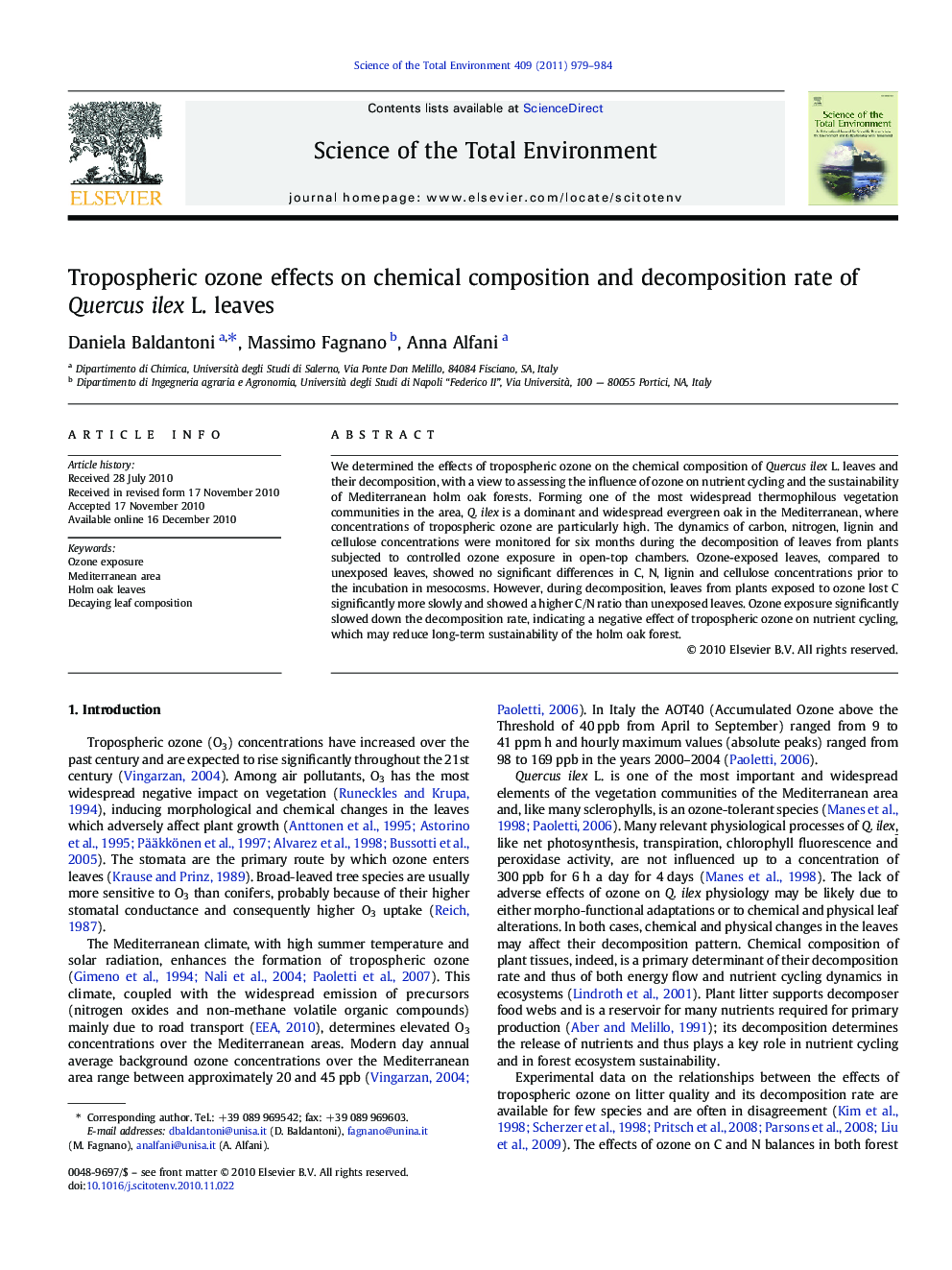| Article ID | Journal | Published Year | Pages | File Type |
|---|---|---|---|---|
| 4430417 | Science of The Total Environment | 2011 | 6 Pages |
We determined the effects of tropospheric ozone on the chemical composition of Quercus ilex L. leaves and their decomposition, with a view to assessing the influence of ozone on nutrient cycling and the sustainability of Mediterranean holm oak forests. Forming one of the most widespread thermophilous vegetation communities in the area, Q. ilex is a dominant and widespread evergreen oak in the Mediterranean, where concentrations of tropospheric ozone are particularly high. The dynamics of carbon, nitrogen, lignin and cellulose concentrations were monitored for six months during the decomposition of leaves from plants subjected to controlled ozone exposure in open-top chambers. Ozone-exposed leaves, compared to unexposed leaves, showed no significant differences in C, N, lignin and cellulose concentrations prior to the incubation in mesocosms. However, during decomposition, leaves from plants exposed to ozone lost C significantly more slowly and showed a higher C/N ratio than unexposed leaves. Ozone exposure significantly slowed down the decomposition rate, indicating a negative effect of tropospheric ozone on nutrient cycling, which may reduce long-term sustainability of the holm oak forest.
Research Highlights►Ozone exposure slows down the decomposition rate of holm oak leaves. ►Ozone exposure does not determine morphological alterations or changes in the carbon, nitrogen, lignin and cellulose concentrations of holm oak leaves. ►Ozone exposure has negative effects on litter nutrient cycling and may reduce long-term sustainability of holm oak forest ecosystems.
